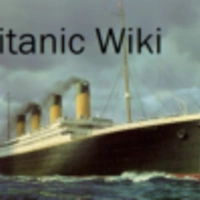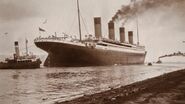Titanic's sea trials began at 6 A.M. on Tuesday, April 2nd 1912, just two days after her fitting out was finished and eight days before she was due to leave Southampton on her Maiden Voyage. The trials were delayed for a day due to bad weather, but by Monday morning it was clear and fair, with only a light breeze.
Aboard were 78 stokers, greasers and firemen, and 41 members of crew. No domestic staff appear to have been aboard. Representatives of various companies travelled on Titanic's sea trials, Thomas Andrews and Edward Wilding of Harland and Wolff and Harold A. Sanderson of IMM. Lord Pirrie was too ill to attend. Jack Phillips and Harold Bride served as radio operators, and performed fine-tuning of the Marconi equipment. Francis Carruthers, a surveyor from the Board of Trade, was also present to see that everything worked, and that the ship was fit to carry passengers.
The sea trials consisted of a number of tests of her handling characteristics, carried out first in Belfast Lough and then in the open waters of the Irish Sea. Over the course of about twelve hours, Titanic was driven at different speeds, her turning ability was tested and a "crash stop" was performed in which the engines were reversed full ahead to full astern, bringing her to a stop in 850 yards (780 m) or 3 minutes and 15 seconds. The ship covered a distance of about 80 nautical miles (92 mi; 150 km), averaging 18 knots (21 mph; 33 km/h) and reaching a maximum speed of just under 21 knots (24 mph; 39 km/h). After her sea trials her sailing safety certificate was certified for one year.
After the test was done, she would return to Belfast so people who were not needed onboard, could disembark on small tenders.
Analysis[]
The sea trials weren't very strict. From this experience, they could have learnt that Titanic took quite a long time to stop and that turning her would take long, and gather that the rudder was on the small size. Nevertheless the conclusion might be that they didn't note this at all.






